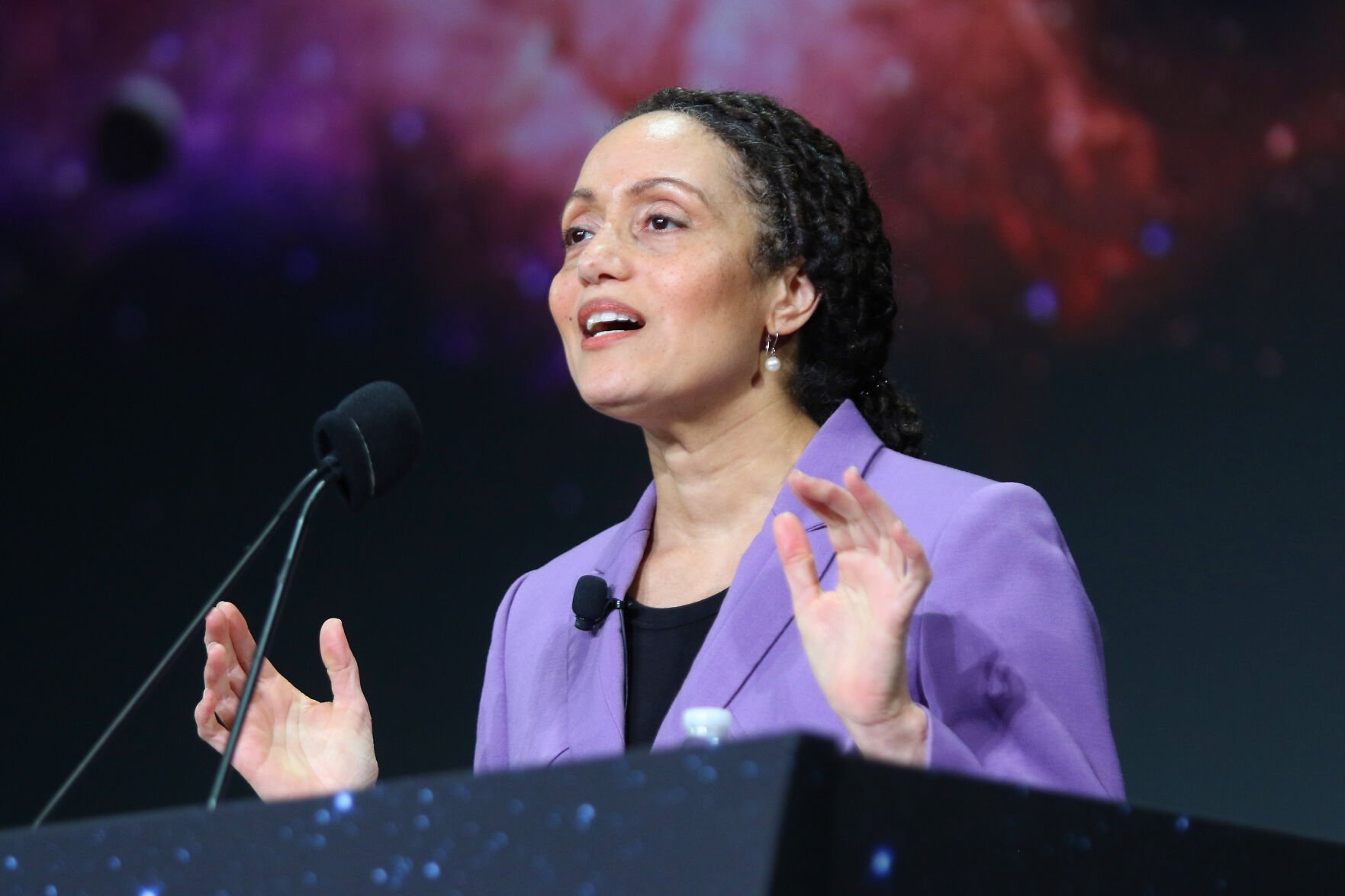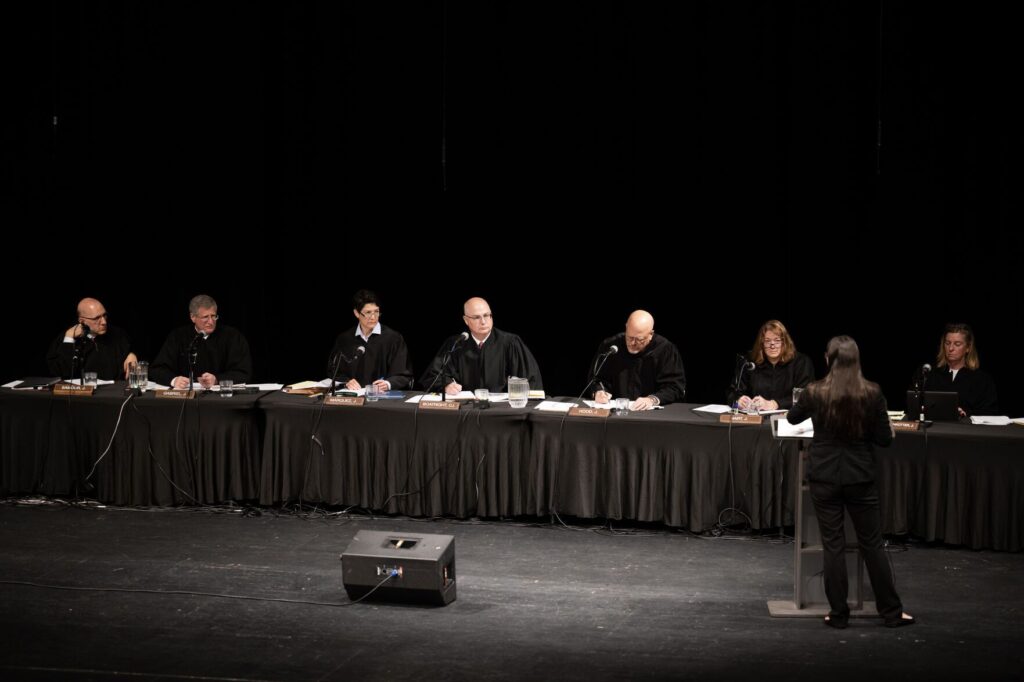NASA, intelligence leaders discuss global threats, space exploration at Space Symposium in Colorado Springs

Leaders at NASA and within the intelligence community spoke at the 37th Space Symposium Tuesday about the importance of building global as well as private-public partnerships in the space community and across industries.
Rich Cooper, Vice President of Strategic Communications & Outreach for the Space Foundation, joins Gazette reporters Wayne Heilman and Dennis Huspeni for a recap of Tuesday’s events at the Space Symposium.
Principal Deputy Director of National Intelligence Stacey Dixon and NASA Deputy Administrator Col. Pam Melroy discussed how these partnerships, in the realms of space exploration and research as well as in intelligence and national security, are essential for the future of peaceful human involvement in space.
“Without the space domain, the IC (intelligence community) would be incomplete,” Dixon said. “Their organizations make us more resilient.”
Top aerospace executives pledge to accelerate equity, inclusion efforts at Space Symposium
Dixon centered her speech on the war in Ukraine and how partnerships in the space industry are crucial to providing information, not only within the war in Ukraine but to mitigate national security threats as a whole.
“What is happening on the ground in Ukraine … is on the forefront of my mind,” Dixon said. “… I have been saddened and angered by what I’ve seen.”
“However I am deeply grateful for the women and men of the intelligence community and what insights they have given,” Dixon said. “From providing early warning of the invasion in an attempt to maintain peace, to their analysis of the war as it has been ongoing.”
Alliances between nations and the amount of information shared between them has been “unprecedented,” Dixon said.
Other threats to democracy include China, Iran and North Korea, she said. Adding that China is an “unparalleled” priority for the intelligence community. But noted that free, open and competitive markets as well as the role of academia and free press are advantages for the U.S.
Air Force, Space Force leaders: US can’t afford to lose in space
Federal agencies and space-related companies conducted hundreds of meetings over the past several months to teach about cybersecurity and how to mitigate threats, Dixon said.
She emphasized the importance of diversifying supply chains noting that China and Russia hold more than half of rare-earth element reserves, which are used to make batteries, magnets and microelectronics.
Dixon said federal agencies are trying to promote innovation and competition for companies by loosening regulations on commercial remote-sensing licensing; for example, satellites.
Climate change can lead to national security problems by creating instability, Dixon said. Data and partnerships to study climate change can help mitigate those impacts.
“Now more than ever, we are facing foundational truths,” Dixon said. “Technology evolves but the importance of partnering to protect freedom over oppression will endure.
Melroy mentioned various partnerships between private and public sectors during her speech that detailed NASA’s latest work in human spaceflight, science, technology and aeronautics as well as the agency’s biggest priorities moving forward including climate, workforce and the moon to Mars strategy.
“NASA has never been busier or more productive,” Melroy said. “… and this is against a backdrop where space is increasingly crucial to the lives of every citizen on earth.”
Protesters object to militarization of space at symposium in Colorado Springs
President Joe Biden’s budget request for NASA funding is 8% higher for 2023 than 2022 – the largest overall request in current dollars for NASA in agency history, Melroy said.
Melroy touted NASA’s space operations work in advancing microgravity science after the return of astronaut Mark Vande Hei to earth after setting a 355-day record in space.
NASA intends to extend the International Space Station’s operations to 2030 and work with industry partners to develop a commercial destination, Melroy said.
“We are in the golden age of commercial space,” Melroy said, noting that the first private astronaut mission to the space station will launch Friday.
When it comes to scientific research and advancements, Melroy celebrated the launch of the Webb Space Telescope, which studies the universe’s earliest stars, the study of Psyche, a metal-rich asteroid, and deflection technology that could be used on “a dangerous near-earth object.” That is in addition to NASA’s work returning samples to earth that the Perseverance rover collected on Mars. Melroy said this mission is a “huge” challenge and would bring many “firsts” to space exploration.
NASA’s technology is focusing on heat shields for larger payloads, nuclear propulsion and Artemis – the mission to land the first woman and the first person of color on the moon, Melroy said.
“We are standing on the shoulders of giants,” Melroy said. “The men who landed on the moon and the women who did the math.”
Space Symposium in Colorado Springs opens ‘largest’ exhibit hall ever
















